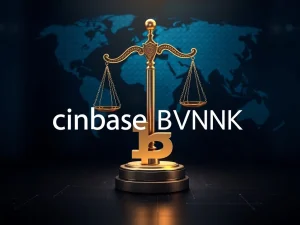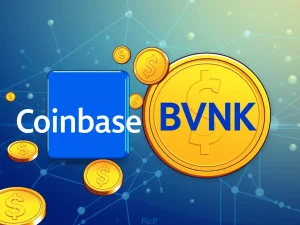Revolutionary Alpenglow Protocol: Solana Targets Web2 Speed with Anza Proposal

The Solana network is known for its speed, but a significant proposal from Solana Labs offshoot Anza aims to push its performance to unprecedented levels. Anza has unveiled ‘Alpenglow,’ a new Solana consensus protocol designed to fundamentally change how the network operates and potentially rival traditional internet infrastructure speeds.
Introducing the Alpenglow Protocol
Anza, a firm focused on Solana blockchain infrastructure, recently proposed Alpenglow. They describe this as the most substantial change to Solana’s core protocol since its inception. The goal is ambitious: achieve speeds and responsiveness comparable to Web2 applications.
Alpenglow is structured into two main components:
- **Votor:** This component handles the processing of voting transactions and the logic for block finalization. It’s intended to replace the current TowerBFT consensus mechanism.
- **Rotor:** This is a data dissemination protocol designed to supersede Solana’s existing Proof-of-History (PoH) timestamping system. Its purpose is to reduce the time it takes for all nodes on the network to agree on the state, thereby improving overall speed and efficiency.
Targeting Web2-Level Speed and Finality
The researchers at Anza believe Alpenglow can dramatically reduce latency on the Solana network. They project it could achieve actual finality – the point where a transaction is irreversible – in approximately 150 milliseconds.
This level of speed is critical because:
- It doesn’t just make Solana faster; it positions it to compete directly with Web2 infrastructure in terms of responsiveness.
- It could unlock entirely new categories of decentralized applications (dApps) that require real-time performance, which were previously challenging on blockchain networks.
How Votor Improves Finalization
Votor, the proposed replacement for TowerBFT, aims to enhance block finalization efficiency. It incorporates two voting modes that run simultaneously:
- Finalization in a single round if 80% of the stake is actively participating.
- Finalization in two rounds if participation is lower, specifically if only 60% of the stake is responsive.
By running these modes concurrently, finalization occurs as soon as the faster path completes. Anza suggests this approach could lead to significantly faster finalization times and allow the network to operate more effectively even under challenging network conditions.
What About Solana Network Outages?
It’s important to note that the Alpenglow protocol, while revolutionary for consensus and speed, is not presented as a solution for the network outages Solana has experienced in the past.
A primary reason for these outages is Solana’s current reliance on a single production-ready validator client, Agave. A security flaw or bug in Agave can potentially disrupt the entire network.
The good news is that client diversification is on the horizon. Firedancer, a new independent validator client developed by Jump Crypto, is expected to launch on Solana’s mainnet later this year. The introduction of multiple clients like Firedancer alongside Agave is seen as a crucial step in improving the Solana network‘s resilience and preventing future widespread outages.
The Significance of This Anza Solana Proposal
The proposal from Anza Solana represents a bold step forward for the network’s core technology. By aiming to replace key components like Proof-of-History and TowerBFT with the Alpenglow protocol‘s Votor and Rotor, Solana is attempting to redefine blockchain performance standards.
If successful, achieving 150ms finality could make Solana a compelling platform for a wider range of applications requiring low latency. While the proposal addresses speed and finality, the network’s overall stability will also benefit from ongoing efforts like client diversification with Firedancer.
Conclusion
Anza’s proposal for the Alpenglow Solana consensus protocol is a major development for the network. By targeting Web2-level speeds and proposing fundamental changes to how transactions are ordered and finalized, Anza aims to significantly enhance Solana’s capabilities. While implementation details and testing will be crucial, this initiative highlights the ongoing drive within the Solana ecosystem to push the boundaries of blockchain performance and compete in a global digital landscape.







